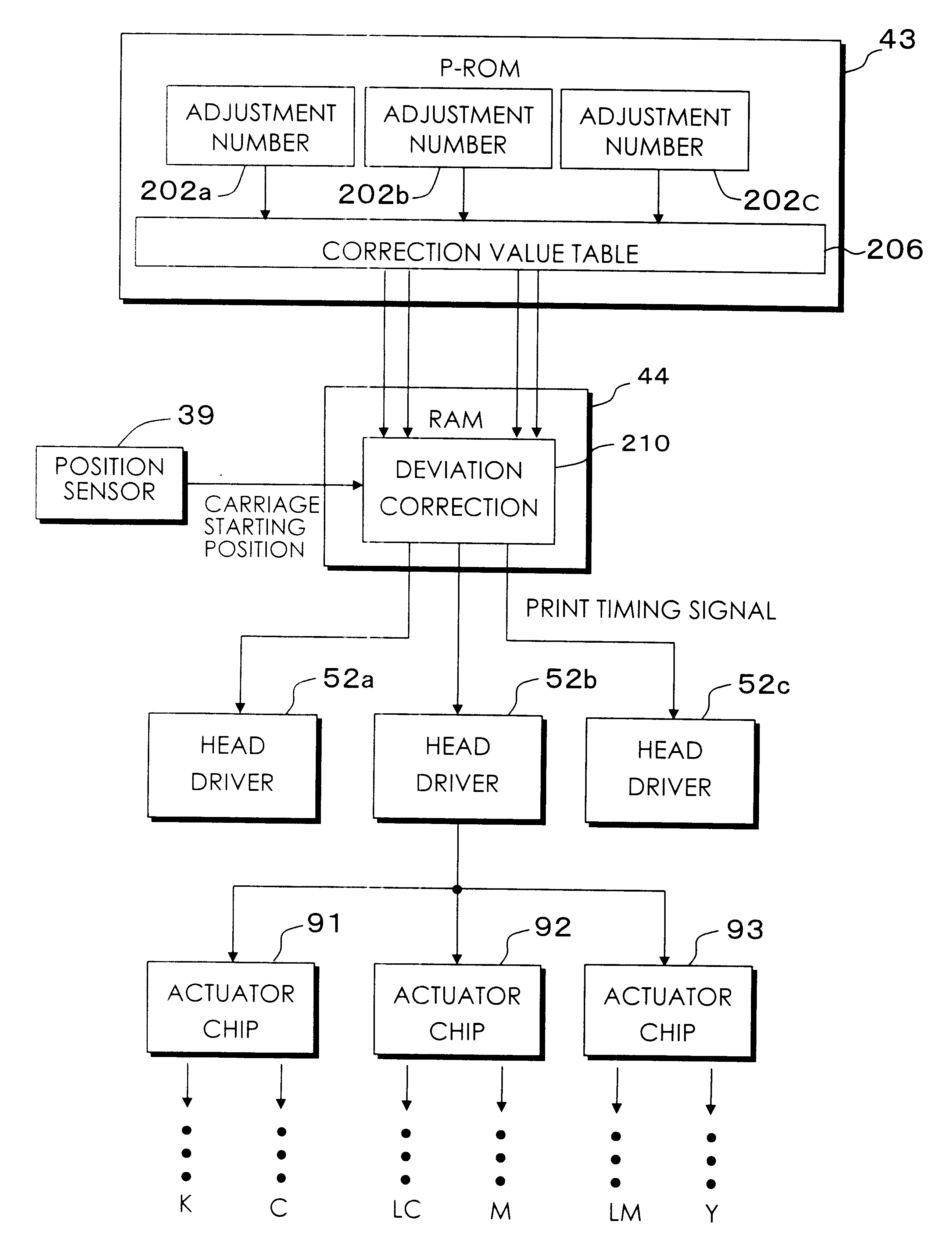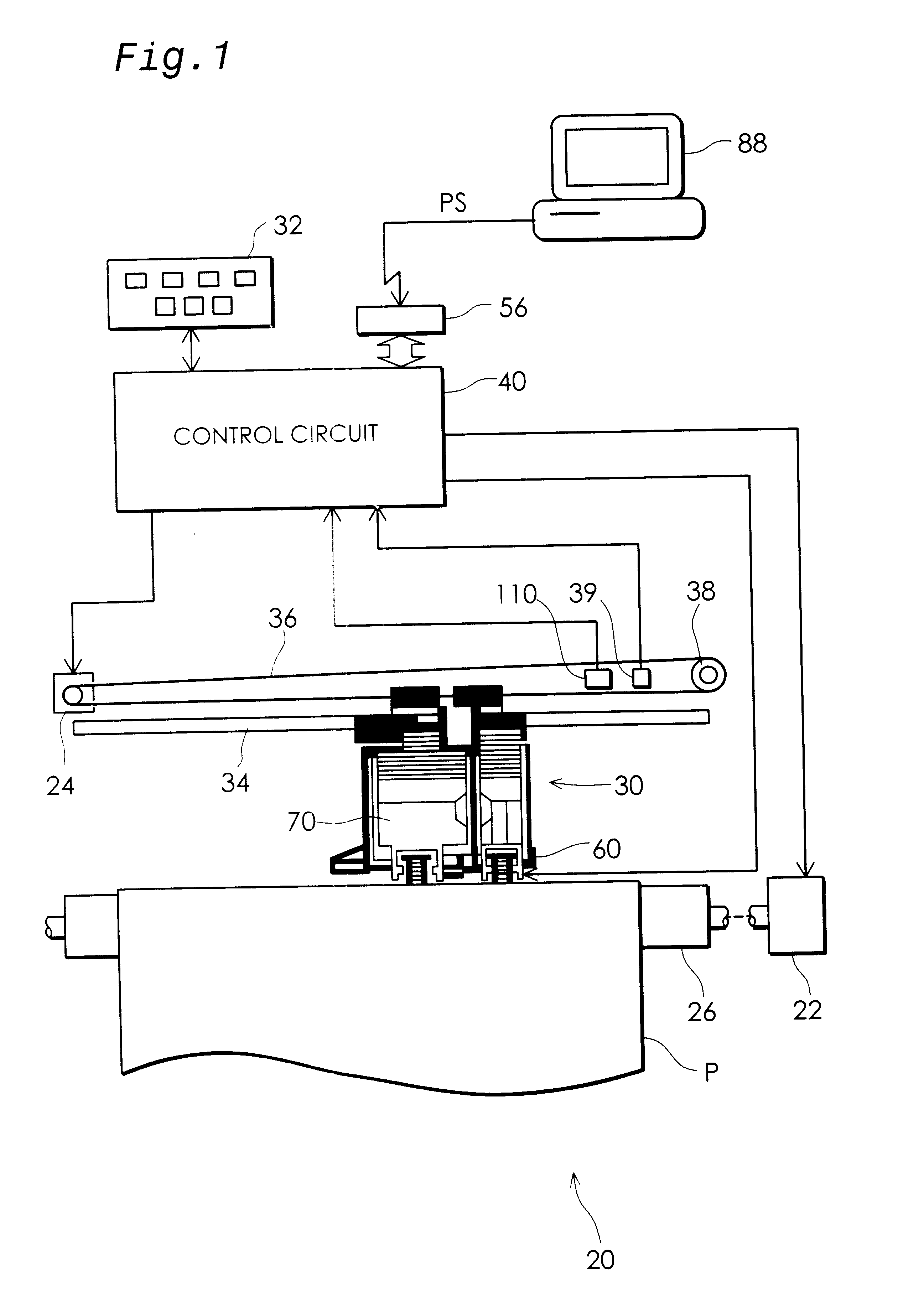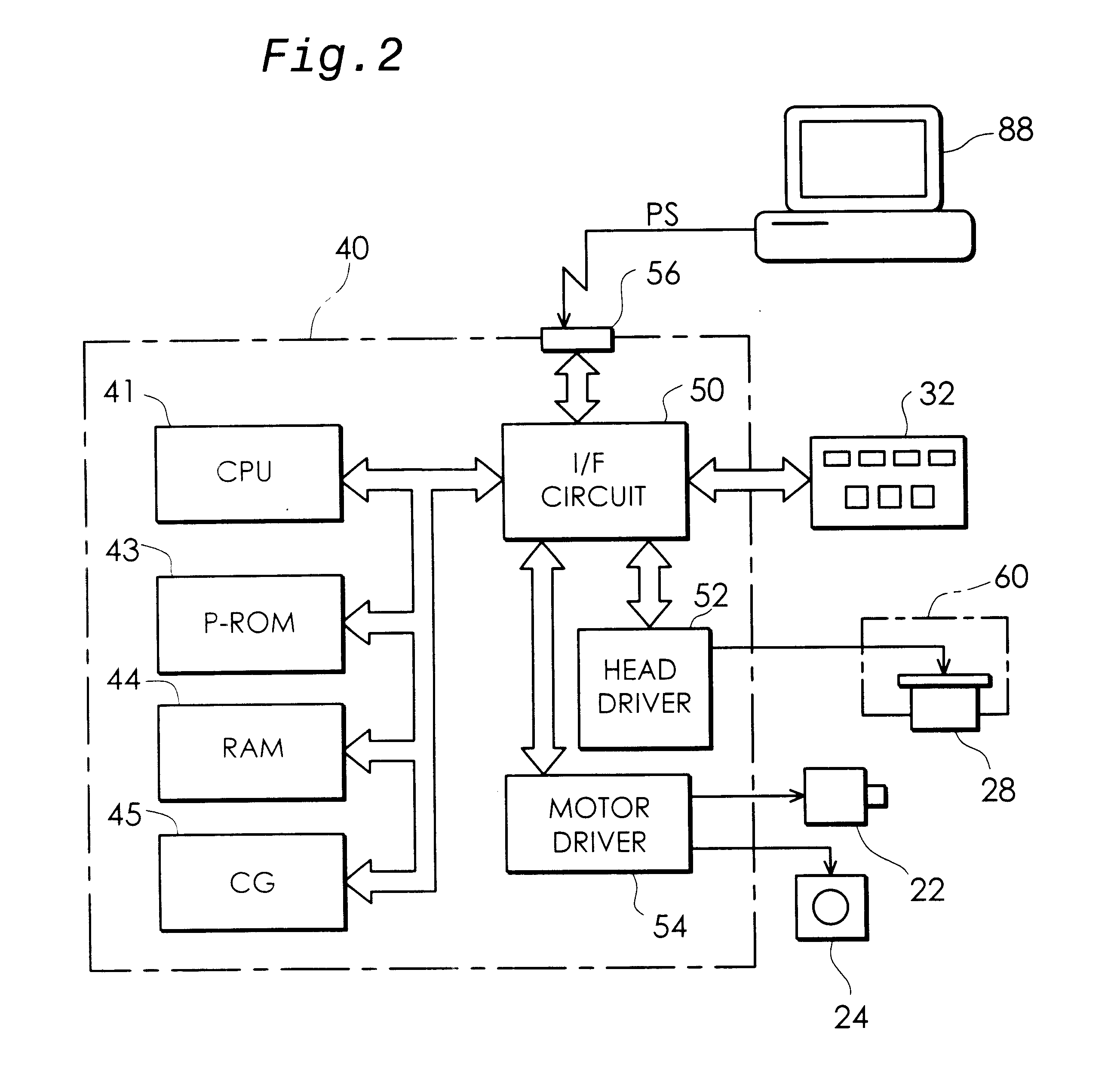Positional deviation correction using different correction values for monochrome and color bi-directional printing
a correction value and correction value technology, applied in the field of image printing, can solve the problems of deviation correction providing little improvement in color image quality, major deviation in the position of printed cyan dots, and deviation correction providing little improvement in the quality of color imag
- Summary
- Abstract
- Description
- Claims
- Application Information
AI Technical Summary
Benefits of technology
Problems solved by technology
Method used
Image
Examples
third embodiment
(3) First Modification of the Third Embodiment
FIG. 27 is a block diagram of the main configuration involved in the correction of deviation during bi-directional printing in the case of a first modification of the third embodiment. The difference compared to the configuration of FIG. 25 is that each of the actuator chips 91, 92 and 93 is provided with its own head drive circuit 52a, 52b and 52c, allowing each actuator chip to be driven independently. Correction of positional deviation during bi-directional printing can therefore also be effected on an actuator chip by chip basis.
(4) Second Modification of the Third Embodiment
FIG. 28 shows a test pattern printed out for determining correction values in a second modification of the third embodiment. In accordance with the third embodiment forward and reverse pass test patterns are printed out in light cyan and light magenta to obtain correction values for each color. However, instead a single test pattern may be printed in light cyan a...
modification 1
F1. Modification 1
With respect to using reference and relative correction values to correct positional deviation during bi-directional, as in the first and second embodiments, when the printer used is able to move the carriage at a plurality of main scanning velocities, relative correction values for the nozzle rows should be set for each such main scanning speed. As in the third embodiment, with respect also to when an absolute correction value is set for each nozzle row, when the printer used is capable of moving the carriage at a plurality of main scanning velocities (speeds), the correction values may be set for each main scanning speed. As can be understood from the explanation made with reference to FIG. 9, changing the main scanning velocity Vs also changes the degree of relative positional deviation between the rows of nozzles. As such, setting a relative correction value for each main scanning speed makes it possible to achieve a further decrease in positional deviation dur...
modification 2
F2. Modification 2
With respect to a multilevel printer which is capable of printing dots of the same color in different sizes, as in the first and second embodiments, it is preferable to set a relative correction value for each dot size. As in the third embodiment, with respect also to when an absolute correction value is set for each nozzle row, when the printer used is capable of printing dots of the same color in different sizes, the correction values may be set for each dot size. Setting a relative correction value for each dot size makes it possible to achieve a further decrease in positional deviation during bi-directional printing. Sometimes a multilevel printer is only able to form dots of the same size in one main scanning pass using one row of nozzles. When this is the case, a dot size is selected for each main scanning pass, so with respect also to the relative correction value used to correct the positional deviation, for each main scanning pass a suitable value is selec...
PUM
 Login to View More
Login to View More Abstract
Description
Claims
Application Information
 Login to View More
Login to View More - R&D
- Intellectual Property
- Life Sciences
- Materials
- Tech Scout
- Unparalleled Data Quality
- Higher Quality Content
- 60% Fewer Hallucinations
Browse by: Latest US Patents, China's latest patents, Technical Efficacy Thesaurus, Application Domain, Technology Topic, Popular Technical Reports.
© 2025 PatSnap. All rights reserved.Legal|Privacy policy|Modern Slavery Act Transparency Statement|Sitemap|About US| Contact US: help@patsnap.com



